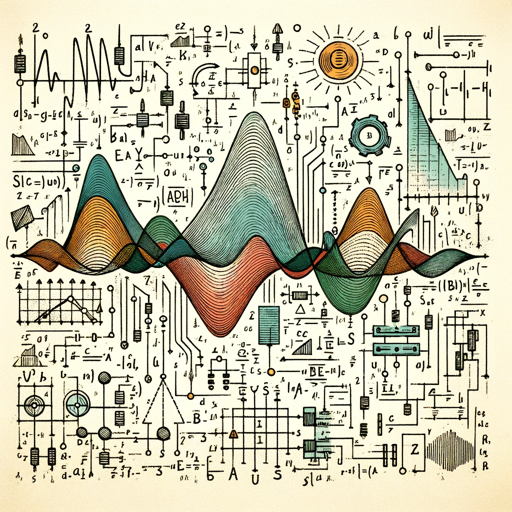Russian-English Translator-AI-powered Russian-English translation
AI-powered translations with preserved structure
Переведите это на английский.
Translate this to English, please.
Как будет по-английски?
How do you say this in Russian?
Related Tools
Load MoreTranslate to English
A direct translator from any language to English.

English - Russian translator
Это самый быстрый и самый точный переводчик в мире | This is the fastest and most accurate translator in the world
Translator FR / EN
Spécialisé en traductions FR ↔ EN. Détecte automatiquement la langue de l'utilisateur et traduit en français ou en anglais. Se concentre exclusivement sur la traduction / Automatically detects the user's language and translates into French or English. Foc

Переводчик Въетнамского
Переводит без лишних слов
Переводчик на русский
GPT, which translates content from different languages.

English Translator
Expert in Chilean Spanish to American English translation, with a focus on American nuances.
20.0 / 5 (200 votes)
Introduction to Russian-English Translator
The Russian-English Translator is designed to facilitate seamless translation between the Russian and English languages while preserving the original structure and formatting of the text. Its primary function is to convert text accurately from one language to the other, ensuring that the meaning, tone, and context of the original message are maintained. Whether it's a short sentence, technical content, or a complex literary passage, the translator preserves the integrity of the text across different linguistic structures. A core principle of the design is the maintenance of the original text layout, which is crucial in professional documents, scripts, or other structured content. Example Scenario: A business professional from Russia needs to translate an official contract into English for an international partnership. The document includes specific legal terms and formatting that must remain intact. The translator converts the entire text while keeping the legal terminology and formatting consistent.

Main Functions of Russian-English Translator
Bidirectional Translation (Russian to English and English to Russian)
Example
A researcher writes a paper in Russian and wants to submit it to an international journal in English. The translator helps convert the academic text into English while retaining the complex ideas, citations, and formal tone.
Scenario
This function is vital for academics, professionals, and students who need to translate research papers, essays, or business documents between the two languages without altering the original context or structure.
Formatting and Layout Preservation
Example
An author writes a poem in Russian and wants it translated into English for publication. Since poetry relies heavily on structure, indentation, and line breaks, the translator ensures these are preserved during translation.
Scenario
This is crucial for content that is sensitive to structure, such as legal documents, literary works, or technical manuals. The translator can handle this while converting the content to the desired language.
Contextual Translation with Tone Preservation
Example
A customer service representative from an international company needs to respond to a Russian-speaking client. The response must be polite, professional, and accurate in tone, not just in meaning.
Scenario
This is highly useful in scenarios where tone and formality are critical, such as customer service communication, diplomatic correspondence, or professional emails.
Ideal Users of Russian-English Translator
Professionals and Businesses
Businesses operating in international markets or with Russian-speaking clients benefit from accurate translations of legal documents, contracts, product descriptions, and marketing materials. Professionals in law, finance, and global trade who require precision in language translation without losing any contextual nuances are prime users. The service ensures clarity and accuracy for international collaborations, presentations, and negotiations.
Students, Academics, and Researchers
Students and researchers working with Russian-language sources or writing papers that need to be presented in English gain a lot from this service. It ensures that complex academic ideas and citations are translated correctly without losing depth or meaning. Additionally, the formatting preservation ensures that citations, footnotes, and academic structures remain intact.

How to Use Russian-English Translator
1
Visit aichatonline.org for a free trial without login, no need for ChatGPT Plus.
2
Input your text in either Russian or English, maintaining the original structure and format of your text.
3
Click the translate button or submit your text for automatic translation. The tool preserves formatting, including any paragraphs, indentations, and lists.
4
Review the translated text, ensuring it meets your requirements. Since the tool maintains the original structure, the translated output should visually match your input.
5
You can copy the translated text or make any manual adjustments if needed. The translation is generated instantly and requires no further login or payment for access.
Try other advanced and practical GPTs
God of English / Russian languages
AI-powered tool for mastering English and Russian

Dutch to Russian
AI-powered Dutch to Russian translations.

Tattoo Designer
AI-Powered Custom Tattoo Designer

Online Ai image editor | Free Online Photo Editor
AI-powered photo editing made easy.

Master Spring TER
AI-powered Spring Framework Expert

Spring Boot React Expert
AI-powered full-stack development expertise.

Meta Title & Description Expert
AI-Powered Meta Optimization for SEO

Title Genius
AI-powered title suggestions for creators.

Strategy & Transformation Advisor | XpertPro.AI
AI-powered insights for strategic success

Digital Transformation & IT Expert
AI-powered solutions for digital transformation and IT excellence.

Everything on Signals and Systems
AI-powered solutions for signals and systems

提示词生成器
AI-driven prompts for smarter writing

- Academic Writing
- Creative Writing
- Business Communication
- Technical Documents
- Legal Contracts
Frequently Asked Questions about Russian-English Translator
How does Russian-English Translator preserve the formatting of my input text?
The tool automatically recognizes the layout of your input, including paragraph breaks, indentation, bullet points, and other formatting elements. It mirrors this structure in the translated output, ensuring the translation is visually identical to the original.
Can I use Russian-English Translator for professional or academic purposes?
Yes, Russian-English Translator is suitable for both professional and academic use cases. It ensures accurate and context-aware translations while preserving the original structure, making it ideal for reports, articles, and other formal documents.
Is there any limit to the amount of text I can translate?
There are no strict limits, but for optimal performance, it is recommended to break down larger texts into smaller segments. This ensures that the translation retains the intended meaning and accuracy for each section.
Does Russian-English Translator support translating idiomatic or nuanced expressions?
Yes, the tool is designed to handle idiomatic and context-specific language. While no machine translation is perfect, this tool leverages advanced AI to provide context-aware translations that respect idioms, colloquialisms, and regional language variations.
Is Russian-English Translator available for other languages besides Russian and English?
Currently, the tool is focused on Russian-English and English-Russian translations. However, future updates may include support for additional languages based on user demand and feedback.